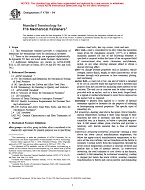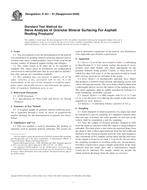Click here to purchase
Leading experts provide 24 papers addressing four areas pertinent to fatigue crack growth thresholds: mechanisms, test procedures, analysis, and applications.
Mechanisms: Three mechanisms that influence thresholds are discussed including: crack-tip closure, environment, and Kmax effects. A simplistic four-parameter model that describes FCG threshold behavior of elastic-plastic materials is also presented.
Test Procedures: Eight papers focus on loading and specimen-type effects with research showing that the resistance-curve (R-curve) method to determine the threshold for fatigue-crack growth should allow more reliable application of ?Kth values to engineering problems.
Analysis: Three papers analyze the behavior of fatigue cracks in the threshold regime using several different analysis methods. These methods were the elastic-plastic finite-element method (FEM), the Dugdale-type mode, the BCS (Bilby, Cottrell and Swinden) model, and a discrete-dislocation model.
Applications: Nine papers address applications of threshold concepts and endurance limits to aerospace and structural materials. The impact of a number of testing variables on the measurement of fatigue-crack-growth thresholds, in particular ASTM E 647, Test Method for Measurement of Fatigue Crack Growth Rates is also discussed.
Product Details
- Published:
- 01/01/2000
- Number of Pages:
- 452


